Navigating Dubai's 91 Bus Route: Your Essential Guide
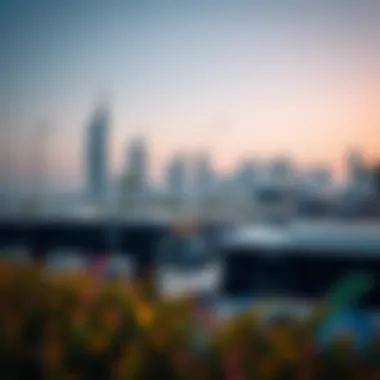
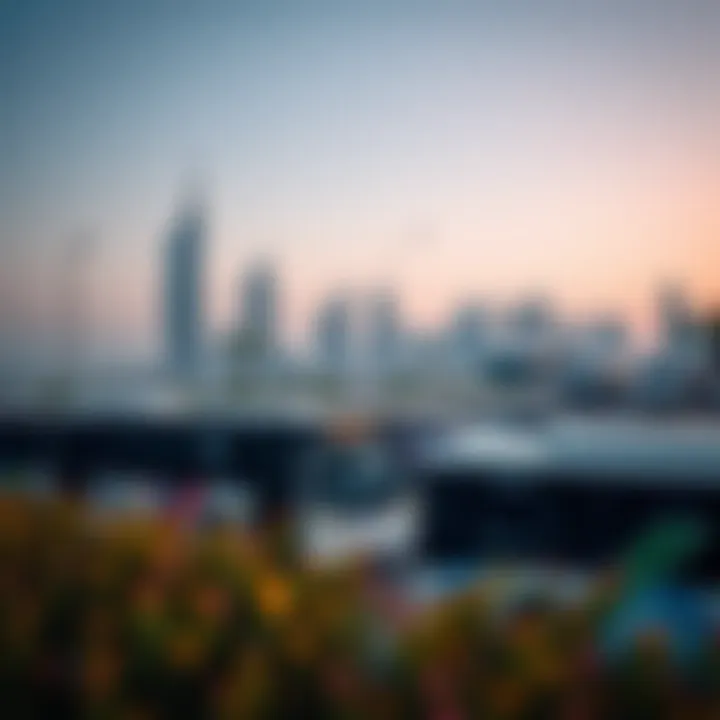
Intro
Dubai is a city that marries tradition with modernity, an urban tapestry woven with dazzling skyscrapers and the rich heritage of the Arabian Peninsula. Navigating this sprawling metropolis can often feel like trying to find your way through a labyrinth. However, public transportation, particularly the 91 bus route, serves as a vital thread in the city's transportation fabric. This guide aims to shed light on the significance of the 91 bus route, equipping you with essential knowledge to facilitate your journey across Dubai.
The 91 bus route is particularly noteworthy for connecting key locales, making it a preferred option for both residents and visitors. It spans culturally significant sites, shopping districts, and popular tourist attractions. This not only underscores its practicality but also its role in enhancing the experience of exploring the United Arab Emirates’ (UAE) most iconic city. Expect to learn about route stops, how to connect with other transit options, and handy tips to streamline your bus rides—whether you're commuting to work, heading for leisure activities, or simply discovering the wonders Dubai offers.
Utilizing public transport in Dubai is an opportunity to experience the city from a different perspective. With the 91 route in mind, let’s embark on this comprehensive guide, ensuring you don't miss a beat on your travels.
Overview of Public Transportation in Dubai
Dubai's public transportation system plays a key role in the city's infrastructure. It presents a reliable alternative to private vehicles. With rapid urbanization, a coherent public transport network becomes vital for reducing traffic congestion and pollution. Also, it helps in managing the equal distribution of resources across growing neighborhoods.
Importance of Public Transport System
The public transport system in Dubai isn’t just about getting from point A to point B; it’s a lifeline for many residents and a means of discovering the city for visitors. It eases the daily grind, allowing commuters to save on costs associated with car ownership. Using public transit is eco-friendly as well, aligning with the city’s sustainability goals. As the famous saying goes, "A stitch in time saves nine"; thus, investing in public transport is crucial for managing the future of transportation.
Key Modes of Transport
Transport is multifaceted in Dubai. The system is a combination of various transit options that work in harmony to facilitate mobility.
Dubai Metro
The Dubai Metro stands tall as a beacon of modern transport, marrying speed and efficiency. This elevated rail network spans across significant areas of the city, making it a popular choice among commuters. A notable feature is its driverless operation – a first of its kind in the region, adding a layer of reliability to the service. With multiple lines connecting to key districts, the Metro significantly cuts travel time, often whittling down commutes to a fraction of what they would be by road. However, during peak hours, crowding can become an issue, but it’s a small price to pay for convenience and efficiency.
Tram Services
Complementing the Metro, Dubai's tram services provide an essential link in certain areas such as Dubai Marina. These trams are known for their comfort and ease of accessibility. One of the standout features is their seamless integration with other transit modes, allowing riders to transfer from the tram to the Metro without skipping a beat. This efficient connectivity makes the tram an attractive option, especially for those residing in the modern developments around the marina. Nonetheless, the tram network is somewhat limited when compared to the extensive Metro, which can be seen as a drawback for some travelers.
Public Buses
Public buses serve as the backbone of Dubai's transport framework. They are both affordable and diverse, reaching parts of the city that might not be accessible via the Metro or tram. Buses are generally well-maintained and cover extensive routes, making them a pragmatic choice for many commuters. One unique aspect of the bus system is its flexibility – buses can navigate road conditions and traffic much better than fixed rail systems. While they may not always be the fastest option available, the value for money is commendable, especially for budget-conscious travelers. Some may find them less appealing during rush hours, given they can experience delays due to street congestion.
Overall, Dubai's public transportation options, including the Metro, tram, and bus services, offer a cohesive network that caters to the diverse needs of the city’s inhabitants. These options not only foster connectivity but also promote sustainable urban living.
By harnessing these various modes of transport, Dubai stands out as a model for other cities aiming to streamline their public transit systems.
Prolusion to the Bus Route
The 91 bus route stands as a vital cog in Dubai's extensive public transport machinery, connecting various pivotal locales that draw both residents and visitors alike. Understanding this route is essential not just for daily commuters but also for those exploring the cultural and commercial treasures the city has to offer. The significance of the 91 bus route lies in its ability to serve as a conduit between diverse neighborhoods and key landmarks, facilitating ease of movement across the dynamic urban landscape of Dubai.
Route Specifications
Starting Point
The journey commences at the Al Jafiliya Bus Station, a central hub that makes it easy for passengers to hop on and off. This starting point is strategically placed near Dubai’s vibrant residential and business sectors. Al Jafiliya is a popular choice due to its easy accessibility, which supports a high volume of commuters looking to start their journey. Notably, the station is also close to other transport options, like the Metro, enhancing the overall convenience for daily travels. The unique feature of this starting point is its proximity to the Dubai World Trade Centre, allowing business professionals to easily connect with their workspaces. However, peak hours may see crowded conditions, which can be a drawback for some riders.
End Point
The route gracefully concludes at Dubai Mall, one of the largest shopping and entertainment destinations in the world. This end point is more than just a shopping center; it’s a multi-faceted venue that draws people for its aquarium, indoor ice rink, and stunning views of the Burj Khalifa. The appeal of Dubai Mall as an endpoint lies in its role as a cultural and retail nucleus, making it a beneficial stop for tourists and residents alike. The uniqueness of this location also comes with challenges, particularly heavy footfall during weekends and holidays, resulting in possible delays for bus arrivals at this bustling hub.
Total Distance
Running approximately 20 kilometers, the total distance of the 91 bus route offers a broad overview of Dubai's urban development. Not only does this length connect pivotal areas, but it also encapsulates a variety of scenery that portrays the city’s architecture and lifestyle. The total distance is a beneficial factor for those looking to explore multiple destinations in one go, making it a practical choice for efficient commuting. However, it’s important to note that the longer distance may translate into increased travel time during peak hours, a consideration for those in a hurry.
Significance of Route
Connecting Key Areas
Route 91 plays a significant role in linking various prominent districts, effectively stitching together neighborhoods and attractions across Dubai. Connecting areas like Al Wasl and Jumeirah, this bus route ensures that both residents and tourists have access to vital locations, such as schools, hospitals, and entertainment precincts. The key characteristic of its connectivity adds immense value to daily commuting, making it not just a bus route but a lifeline for the community. The unique aspect here is its alignment with several major roads, enhancing accessibility. However, the density of the connected areas can sometimes cause congestion, impacting travel times during rush hours.
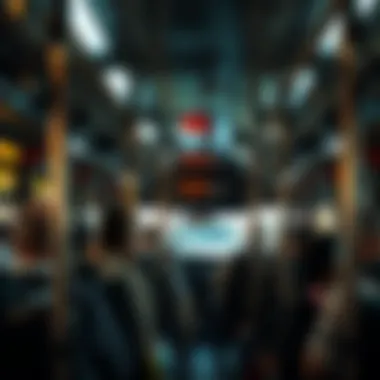

Facilitating Commuters
Facilitating commuters is at the heart of what the 91 bus route offers, making travel smoother for a diverse user base. Whether it be a transient businessperson rushing to a meeting or a local heading to the mall, this route meets varied needs efficiently. The importance of this bus service in the layout of the city cannot be overstated, as it alleviates car dependency significantly. The route's flexibility often means that it helps avoid the daunting task of parking at crowded areas, a considerable advantage in Dubai's bustling environment. On the flip side, some commuters may find the bus's reliance on schedules slightly inconvenient, especially if they require more immediate options.
Key Stops Along the Route
Understanding the key stops along the 91 bus route is essential for anyone navigating Dubai's public transport system. Each stop is strategically placed, catering to various needs of the city’s residents and visitors. By focusing on these significant stops, riders can make informed decisions about their journeys, maximizing convenience and efficiency.
Major Transit Hubs
Al Jafiliya
Al Jafiliya serves as a vital hub within the 91 route. Its proximity to several important landmarks makes it a popular choice for commuters. The stop is renowned for its connection to the Dubai Metro, specifically the Red Line, allowing passengers to easily transfer to another transport mode.
A key feature of Al Jafiliya is its accessibility; it offers a user-friendly environment for travelers. Commuters can find nearby amenities like cafes and shops, which provide options for a quick snack or beverage during waiting times. However, during peak hours, the area can get quite crowded, which may deter some riders. Nonetheless, its overall contribution to the flow of public transportation cannot be overlooked.
Dubai International Financial Centre
Dubai International Financial Centre, commonly known as DIFC, stands as an economic epicenter. It hosts a great number of international corporations and financial institutions. Given its status, the stop at DIFC on Route 91 is integral for business professionals and tourists alike, making it a hub of activity.
What makes DIFC unique is not just its corporate allure, but also the vibrant atmosphere. The area boasts stylish restaurants and art galleries, enriching the experience for visitors. It provides practical benefits, too; with frequent bus services connecting to key destinations, efficiency is a significant aspect for those commuting through DIFC. Though the financial district is busy, it is an appealing stop for individuals wishing to blend work with leisure while on the go.
Dubai Mall
Dubai Mall is an iconic landmark and arguably one of the most visited places in the city. The bus stop nearby facilitates access to an array of attractions, from shopping to entertainment. The sheer size of the mall draws in crowds, making it essential for the 91 route to include it.
A notable characteristic of Dubai Mall is the sheer variety of experiences it offers. From high-end boutiques to the famous Dubai Aquarium, there’s something for everyone. The bus stop's placement means that riders can swiftly transition from public transport to enjoying world-class attractions without hassle. However, visitors should be prepared for potential wait times during peak visiting hours, as the influx of shoppers and tourists can create busy scenarios. Regardless, it remains a crucial stop for anyone looking to explore the grandeur of Dubai.
Residential Areas Served
The 91 bus route also plays a significant role in connecting residential areas to key city destinations, ensuring that local residents have convenient access to transport options.
Al Wasl
Al Wasl is a vibrant residential community, known for its local charm and cultural vibe. This stop caters to the needs of families and individuals living in the area, providing a direct link to bustling commercial sectors. It’s an excellent choice for residents who appreciate a balance of community life and access to urban conveniences.
One of the unique features of Al Wasl is the variety of local shops and eateries available, highlighting the community's heritage. Living in such a lively area, residents benefit from efficient bus services that connect them to major attractions within the city. However, the bus stops can get a bit crowded during rush hours, which may cause some inconvenience. Still, the overall accessibility it provides makes it a crucial stop for locals.
Jumeirah
Jumeirah is well-known for its elegant villas and proximity to stunning beach fronts. This area attracts both expatriates and travelers, making Jumeirah a sought-after location. The stop on the 91 route provides residents and visitors easy access to the city’s leisure and commercial activities.
A standout feature of Jumeirah is the array of recreational opportunities, such as parks and beach resorts, making it a fantastic option for families and tourists. The bus route enhances connectivity, ensuring that those living in Jumeirah can efficiently explore Dubai’s wealth of experiences. However, the popularity of the area can lead to increased traffic, particularly during weekends, which may slightly affect travel times. Nonetheless, the overall benefits of the 91 bus route in enhancing access to Jumeirah’s attractions is undeniable.
Connections with Other Transport Services
The 91 bus route in Dubai enjoys a crucial role in the broader public transit ecosystem, providing vital connections to other modes of transportation. This connectivity not only enhances the overall efficiency of the transport network but also significantly benefits daily commuters and tourists alike. Being able to switch between services with ease can turn a long trip into a manageable jaunt across the city.
Integration with the Metro
Transfer Points
The transfer points between the 91 bus route and the Dubai Metro serve as lifelines for many travelers. These designated areas are strategic junctions where bus passengers can hop onto the Metro, paving the way for high-speed transit across the emirate. Notably, these transfer points are often located near high-traffic areas such as shopping centres and business districts, amplifying their convenience. The wayfinding signage at these spots is also quite user-friendly, making it easier for newcomers to navigate.
Moreover, they are equipped to handle large volumes of passengers, ensuring that everyone can transition smoothly from the bus to the train. This efficiency can considerably minimize wait times and cut down on the overall journey duration, offering a seamless travel experience. However, on busy days, these transfer points can feel more like a scrum than a leisurely changeover, presenting some challenges such as congestion during peak times.
Efficiency of Transfers
When discussing the efficiency of transfers, it’s essential to highlight how well the bus and Metro schedules align. The coordination is such that buses often arrive just in time for riders to catch the Metro, effectively choreographing the daily dance of commuters. This level of synchronization makes the 91 bus route a popular choice for many, as it allows for smooth transitions and reduced travel time.
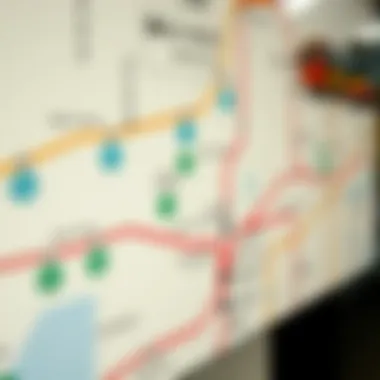
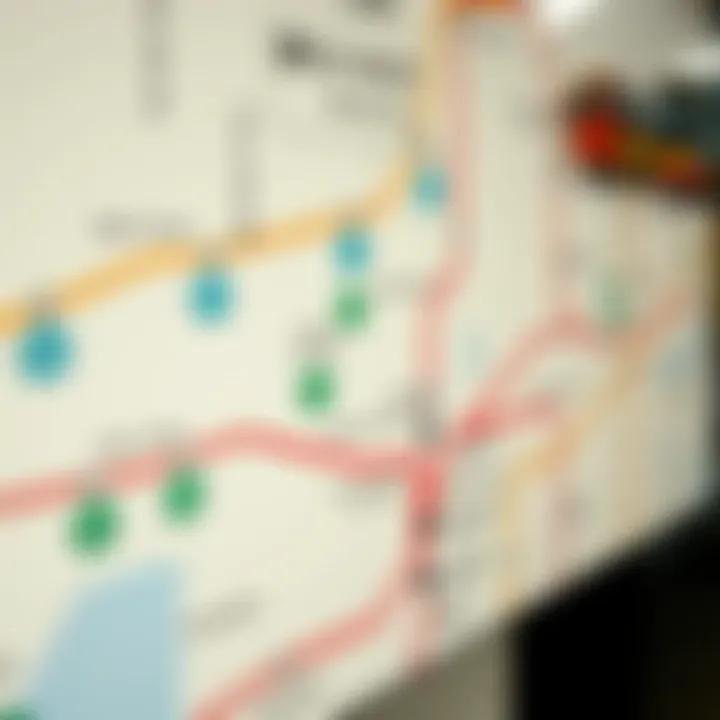
Frequent stops along the route enable quick access to Metro stations, which is especially beneficial for those who might be in a hurry. However, there can be downtimes between services due to unforeseen delays, which can disrupt the flow for users. That said, the overall efficiency of the transfers considerably boosts the attractiveness of the public transportation system.
Connecting with Tram Services
In addition to its integration with the Metro, the 91 bus route connects seamlessly with tram services across Dubai. This connection opens up new avenues for passengers, linking the bus network with areas that might not be directly accessible via the Metro. The trams add another layer of flexibility to travel options within the city.
Tram stops are strategically located near busy urban areas, which enhances the practicality of hopping on a tram after taking the bus. For instance, riders can get off the 91 bus and board a tram to reach destinations like the Dubai Marina or Jumeirah Beach, where buses might not directly go. This comprehensive network of connections makes navigating the city less daunting for both residents and visitors.
The interplay between the bus route and tram services exemplifies the thoughtful design of Dubai's public transport, catering to diverse commuting needs and preferences.
Operational Details of Route
Understanding the operational details of the 91 bus route is key for anyone relying on public transport in Dubai. It not only frames how users can best utilize the service but also highlights its role in daily commutes. Knowing the schedule, frequency, fare structures, and payment options can enhance riders' experiences, helping them make informed decisions when traveling through the city.
Schedule and Frequency
Peak Hours
During peak hours, typically from 7:00 AM to 9:00 AM and 5:00 PM to 8:00 PM, the 91 bus schedule is intensified with shorter waiting times between buses. This period sees a surge in passenger volume, and the frequency of service increases to accommodate the demand. The bus can sometimes arrive every 10 to 15 minutes, providing a quicker alternative for commuters heading to work or other commitments. However, the downside is that buses can be crowded. The rush may deter some riders, especially those who value comfort and personal space.
Off-Peak Timings
Conversely, off-peak timings, which fall outside the busy morning and evening commutes, offer a more relaxed experience on the 91 route. Buses typically operate at longer intervals, ranging from 20 to 30 minutes apart. While this might seem inconvenient for some, it has its perks. The less crowded environment allows passengers to enjoy a seat and a bit of peace while they travel. Moreover, riders who choose to travel during off-peak hours often find it easier to navigate through various stops without the hustle and bustle.
Fares and Payment Options
Nol Card Usage
Utilizing a Nol card is one of the most effective ways to pay for fare on the 91 route. This card, which is used throughout Dubai's public transport system, provides a seamless payment experience. Loading the Nol card with credit allows for easy tap-and-go access at bus stops and metro stations. One of the standout features of the Nol card is the ability to track expenses and load funds online, which adds convenience for regular users. While some riders might prefer cash transactions, it's worth mentioning that Nol card holders often enjoy discounted fares compared to one-time ticket users, making it a financially savvy option.
Ticket Purchase
For those who might not want to invest in a Nol card, purchasing a ticket directly from the bus is an option. This straightforward method of payment is beneficial for tourists or occasional riders who only need to make a single journey. It’s also a good choice for visitors who may not have time to re-load or acquire a Nol card. However, tickets sold on bus may come at a higher fare compared to using a Nol card. Additionally, it is necessary for riders to have exact change, as the bus does not offer change, leading to potential inconveniences.
It's crucial to know that understanding the operational aspects of the 91 bus route enhances the ability of passengers to navigate Dubai's sprawling urban landscape efficiently. With thoughtful planning around peak timings, fares, and payment methods, both residents and visitors can enjoy a smoother commuting experience.
Navigational Tips for Riders
Navigating the 91 bus route in Dubai can significantly enhance the daily commuting experience, whether you're a local or a tourist. Knowing how to plan your journey efficiently and use real-time resources can make the difference between a smooth trip and a frustrating one. The objective of this section is to equip riders with essential tips that not only streamline their travel but also allow them to tap into the full potential of Dubai's public transport system.
Planning Your Journey
Planning ahead is akin to packing an umbrella on a sunny day – you might not need it, but when the rain hits, you'll be glad you did. Understanding the 91 bus route, including its schedule and key stops, is critical for seamless travel. Many riders often underestimate the importance of this simple step. A little bit of preparation not only saves time but also reduces the stress that can come with commuting. Riders should consider browsing the RTA (Roads and Transport Authority) website or using maps to familiarize themselves with the stops along the route. Knowing the location of major transit hubs, such as the Dubai Mall or Dubai International Financial Centre, can help in mapping out your final destination.
"A well-planned trip can make all the difference in your day. Save time and hassle by knowing your route."
Real-time Tracking
In today's fast-paced world, waiting for a bus can feel like watching paint dry. Fortunately, technology has provided solutions to mitigate this wait time. With real-time tracking options, riders can stay informed about the exact arrival times of buses. This feature not only enhances the experience but also aligns with Dubai's ambition to be at the forefront of modern, efficient public transport.
Mobile Apps
Mobile applications have transformed how we navigate public transit. Apps like the RTA Smart App offer a multitude of features, such as route planning, ticket purchasing, and real-time bus tracking. One key aspect of these apps is their ease of use. Riders can simply enter their starting point and destination, and the app will provide options including bus numbers, estimated time of arrival, and even fare details.
Key characteristic: The ability to track bus locations in real-time is a huge plus. This function minimizes waiting time at the stop and provides riders with an estimated arrival window. Many users prefer mobile apps for their efficiency and user-friendly interface, making them an invaluable resource for anyone navigating the 91 route.
Unique feature: Of note, the RTA Smart App offers push notifications for service alerts, which can help users stay updated with any unexpected changes.
Station Displays
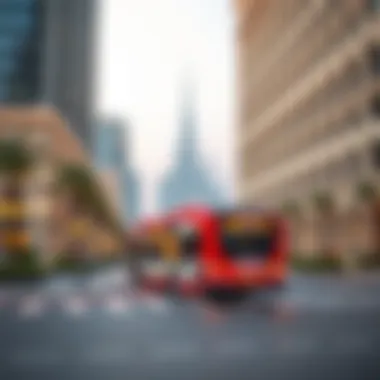
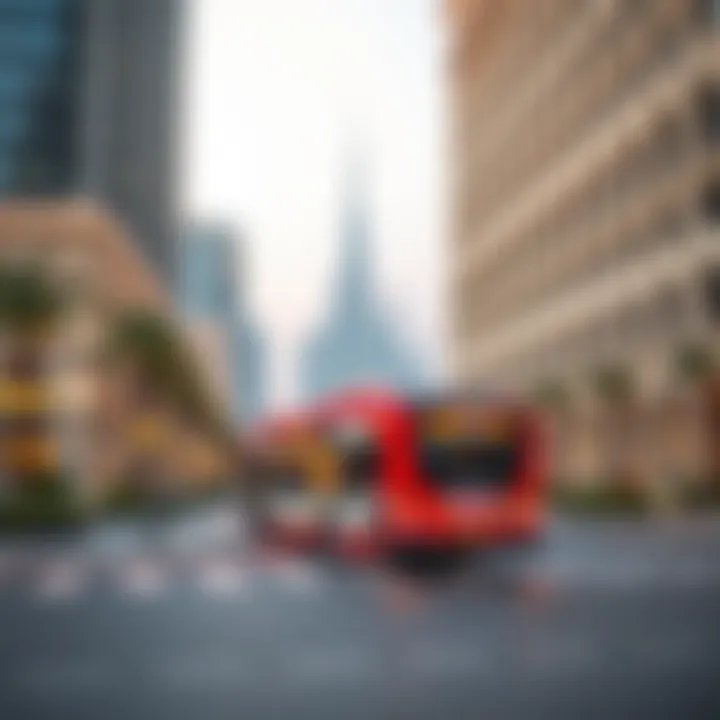
Station displays serve as another vital asset in enhancing the travel experience. These digital boards are strategically placed at bus stops, displaying real-time information on bus arrivals and schedules. One of the standout characteristics of these displays is their visibility, especially during peak travel times. Riders can quickly glance at the boards to check the estimated time until the next bus arrives.
Benefits: The advantage of station displays lies in their accessibility. They cater to both tech-savvy individuals and those who prefer direct visual cues. Unlike mobile apps, these displays do not require a smartphone, making them an excellent resource for visitors or individuals who may not have reliable internet access while on the go.
Limitation: However, one downside might be that you can't check the bus times from afar unless you’re physically present at the stop. This limitation highlights the need for a combined strategy of using both mobile apps and station displays.
Understanding the Bus Route's Impact on Local Areas
The 91 bus route is more than just a line on a map; it’s a vital artery of connectivity in the urban tapestry of Dubai. By examining the impact of this route, we can uncover how it plays a critical role in shaping economic development and enhancing accessibility, which are essential for ensuring the city thrives both economically and socially.
Economic Development
In the grander scheme of Dubai’s consistent evolution, Route 91 fosters economic opportunities. This bus line serves significant commercial hubs and burgeoning neighborhoods, allowing an inflow of customers and workers alike. Consequently, businesses along this route experience increased foot traffic, which translates to better sales performances.
Key points to consider:
- Job Accessibility: Many people in the greater Dubai area rely on public transport to reach their workplaces. With Route 91 connecting residential areas to major business districts, it significantly reduces travel time, thereby boosting productivity.
- Support for Local Businesses: Shops just a stone’s throw away from stops, such as those near Al Jafiliya or the Dubai International Financial Centre, can benefit exceedingly from higher customer turnout.
- Residential Growth: There’s a correlation between accessible public transportation and real estate value. Areas served by Route 91 see an uptick in property demand, further cementing its role as a linchpin in economic dynamics.
"Public transport is essential not just to mobility but to the very heartbeat of urban economic ecosystems."
Enhancing Accessibility
Accessibility is not merely about reaching a destination; it’s about inclusivity and ensuring everyone has a place within the city's framework. Route 91 stands as a bridge for various communities to access essential services, entertainment, and educational facilities.
- Supporting Diverse Demographics: From students to seniors, the bus route caters to a wide range of individuals. The ease of access helps ensure that all demographic groups, irrespective of their socio-economic strata, can partake in the city’s offerings.
- Cultural Integration: The stops along Route 91 are strategically placed close to areas with cultural significance, such as museums and landmarks. This facilitates not only leisure travel but also cultural exchanges, making the city more vibrant.
- Encouraging Eco-Friendly Practices: Public transport helps to lessen the strain caused by personal vehicles, contributing to lower emissions. With the increasing emphasis on environmental sustainability, the 91 bus route is integral to promoting greener commuting habits.
Overall, the impact of Route 91 is profound. By unlocking opportunities and making critical areas more accessible, it reinforces Dubai’s vision of being a progressive and inclusive metropolis.
Environmental Considerations
The growing demand for urban mobility in a city like Dubai has made environmental considerations a focal point in public transport planning. With soaring population rates and increasing vehicular traffic, especially in a bus route as vital as the 91, understanding its environmental implications cannot be overlooked.
Sustainability of Public Transport
Sustainability in public transport encompasses not just the direct environmental impacts of the transport itself, but also the broader societal benefits it can yield. The 91 bus route exemplifies a commitment to sustainability as it reduces reliance on personal vehicles, which in turn, helps conserve energy and diminish harmful emissions. This bus service operates on an efficient schedule, making public transit not only a more environmentally conscious choice but also a pragmatic one for commuters.
Efforts have been made to incorporate eco-friendly technologies into Dubai's transport infrastructure. The buses running along Route 91 utilize modern designs and engines that boast better fuel efficiency compared to older models. Furthermore, the introduction of electric buses to the fleet could signal a transformative shift in how public transportation systems operate. Investing in sustainable practices can lead to a curated environment that results in less pollution and a more pleasant living experience for the inhabitants of Dubai.
Reduction of Carbon Footprint
Addressing the reduction of carbon footprint is essential in tackling climate change. The 91 bus route plays a pivotal role in this endeavor by offering an alternative mode of transportation that can significantly lower individual carbon emissions. Public buses are inherently more efficient than private cars; they can transport dozens of passengers at once, dramatically reducing the number of vehicles on the roads.
To illustrate, research shows that replacing a single commute by car with public transit can cut the commuting individual's carbon emissions by up to 45%. This creates a ripple effect. With more residents choosing the bus over personal vehicles, the cumulative impact on traffic congestion and air quality can be quite considerable.
Investing in public transportation options like the 91 bus route not only promotes a healthier environment but also encourages a shift toward more sustainable urban living.
Promoting the use of the 91 bus route aligns with Dubai's broader goals regarding environmental sustainability. Local initiatives, focused on raising awareness about the advantages of public transit, are equally important. Encouraging residents to utilize Route 91 should be coupled with educational efforts that inform both the local population and tourists about their potential impact when they choose public over private transportation.
In summary, the environmental considerations surrounding Dubai's 91 bus route hug the core values of sustainability and reduction of carbon footprint. By enhancing the appeal of public transport, Dubai sets a powerful precedent for other urban environments grappling with similar challenges.
Future Developments for Route
The future developments for Route 91 hold considerable significance in enhancing Dubai's public transportation landscape. This bus route serves as a crucial vein connecting various parts of the city, making it an essential asset for daily commuters and visitors alike. The ongoing enhancements aim to not only optimize operational efficiency but also to address the ever-growing demands of urban mobility in a rapidly developing metropolis.
Proposed Changes
Several proposed changes reflect a forward-thinking approach intended to cater to an increasing influx of residents and tourists.
- Expansion of Bus Frequencies: One of the key aspects being considered is increasing the frequency of buses. More frequent service during peak hours can significantly reduce waiting times and ensure that the bus remains a viable choice for commuters.
- Service Extensions: There’s talk of extending the route or adding alternating paths to cover new developments and locations. This adjustment can better serve emerging areas where new residential and commercial entities are being established.
- Enhanced Amenities: Plans are on the table for upgrading bus stops—think better seating and maybe even shade structures to combat the Dubai sun. Well-equipped stops can provide a more comfortable waiting experience.
- Incorporating Technology: The integration of advanced tracking systems to provide real-time updates at stops will also improve usability. Enhanced technology can help commuters plan their journeys with greater accuracy, boosting the overall appeal of using public transport.
These changes collectively represent an understanding that the public transport system must evolve in tandem with urban developments. Route 91 needs to adapt to changing commuting patterns and the diverse needs of its users.
Impact of Urban Expansion
Urban expansion in Dubai presents both challenges and opportunities for Route 91. Growth in residential and commercial areas necessitates a reevaluation of transportation strategies, influencing how the bus route aligns with broader infrastructure objectives.
- Population Growth: As Dubai continues to grow, the urban population is projected to increase, leading to higher volumes of commuters relying on public transport. This growing populace will demand improved services, adjustments in routes, and potentially new connections with other lines.
- Commercial Development: New business districts and shopping hubs sprouting in various neighborhoods result in changes to travel demand patterns. Route 91 could play a pivotal role in offering direct access to these booming areas, thus becoming indispensable for economic activity.
- Environmental Considerations: As the city expands, so does the emphasis on sustainable solutions. Making Route 91 more efficient not only serves the immediate needs of commuters but also aligns with Dubai’s sustainability goals. Improved public transport can aid in reducing traffic congestion, which ultimately leads to lower carbon emissions.
- Infrastructure Integration: As new metro lines and tram services are introduced, the synergy between these modes of transport needs careful planning. Ensuring seamless transfers between them will heighten the effectiveness of Route 91 and extend its reach in meeting commuter needs.















